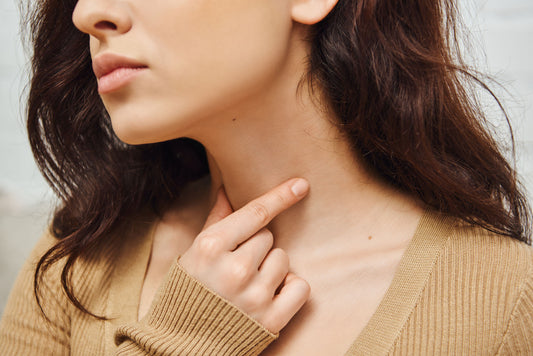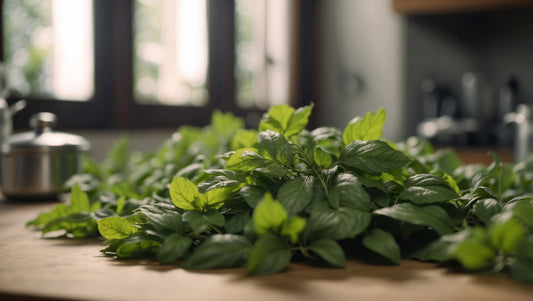With cooler temps and spectacular colors revealing themselves daily, many of us look to Fall as the perfect time to explore the trails or change up our exercise routine with fresh activities. Whether regularly active or hitting it hard mainly on the weekends, we could all use some extra love for our hard-working muscles and joints. Doubtless, you have been hearing all the buzz around turmeric (and its extracted form, curcumin) for some time: we’re going to take a deeper dive here, and get into why - and how - this bright golden-orange root is such a powerhouse for not just your workouts, but your whole body health.
Tasty Roots of Health
For thousands of years, Ayurvedic practitioners have known and used turmeric for its remarkable ability to support multiple body systems: immune, digestive, cognitive, cardiovascular, and inflammatory response. It’s a staple in Indian cooking, adding its delicious pungency and golden color to countless dishes.
We in the West have finally caught up to this orange root’s many benefits, chief among them is its ability to support a healthy inflammatory response. There has been an explosion of recipes for all things turmeric (beyond curries): Turmeric Chai Latte, numerous riffs on the traditional Golden Milk, plus puddings, ice cream, and energy bites. There are so many enjoyable ways to get the goodness of turmeric into your regular diet, ranging from savory to sweet.
The addition of the fat from cow or coconut milk, plus pepper (black or pippali) enhances the absorption of turmeric in the body, as well as making it tastier. The addition of other spices like ginger, cardamom, cloves, or cinnamon not only add a flavor assist, but also increase the antioxidant benefits of turmeric.
Speaking of Absorption…
If you have heard of turmeric, and its extract form, curcumin, you have probably heard something about the controversy over its poor absorption rates. Some companies have gone in the direction of hi-tech delivery systems, featuring nanoparticles or elaborate binding methods to get around this, but science is beginning to figure out that turmeric’s ‘poor absorption’ may not be the issue many thought it was. Let’s explore this.
Curcumin and the Microbiome
For the few decades that curcumin has been studied in the lab, researchers have been stumped by this paradox: the body seems to break down and eliminate curcumin quickly, leaving low concentrations in the bloodstream (a main marker of how available a substance is to the whole body), yet it is still effective in helping the body defend against disease and build robust health.
The science that’s emerging suggests that curcumin may interact directly with the microflora in our guts, altering them in a positive way, which, in turn, improves our systemic health via the gut-brain axis (in which our ‘second brain’ of gut microbes ‘talks to’ our brain via the longest nerve in the body, the vagus nerve.) It also looks like the very process of breaking curcumin down into its components has a beneficial effect on the gut microflora. Poor gut health has been strongly linked to many chronic diseases, as well as mood disorders, so the potential of these discoveries about curcumin’s ability to improve the ‘inner landscape’ is far-reaching. Studies on curcumin have shown that it can modulate important neurotransmitters (like serotonin and dopamine) for improved mood balance.
A healthy gut, with a flourishing microbiome, can contribute greatly to steady blood sugar, a vigorous metabolism, strong immune function, and a more positive outlook. More good news is emerging about how exercise may also improve these important health markers.
Curcumin and Exercise: Your Microbiome’s Dream Team
Research is showing that exercise boosts gut microbes that produce a short-chain fatty acid (SCFA) called butyrate, which (in the presence of dietary fiber) in turn produces hormones that curb hunger and play a positive role in metabolism and energy regulation. For the immune system, butyrate encourages cell growth and turnover in healthy cells, while suppressing growth and promoting cell death in unhealthy ones. This SCFA also increases the integrity of the intestinal lining, which ensures that we absorb the most from what we eat, and defend against what is harmful.
Studies have also shown that anti-inflammatory bacteria increase after exercise, which dovetails nicely with all the goodies that curcumin can bring us when we consume it on a regular basis. Curcumin may help to reduce that soreness you get, a day or so after you did a few too many pull-ups, kicked up your running mileage, or hit that nearly vertical trail you just couldn’t resist. It may also help to reduce the joint stiffness and discomfort that often rides along with an uptick in your activity level, as well as helping to increase your muscular endurance, going forward.
So, what are you waiting for? Tuck some curcumin supplements into your pack, pour a frothy Golden Milk into your travel mug, or get a quick and tasty refuel by stirring some powdered curcumin-coconut milk blend into a yogurt, after your favorite activity. Your joints, muscles, gut, and brain will all thank you!




